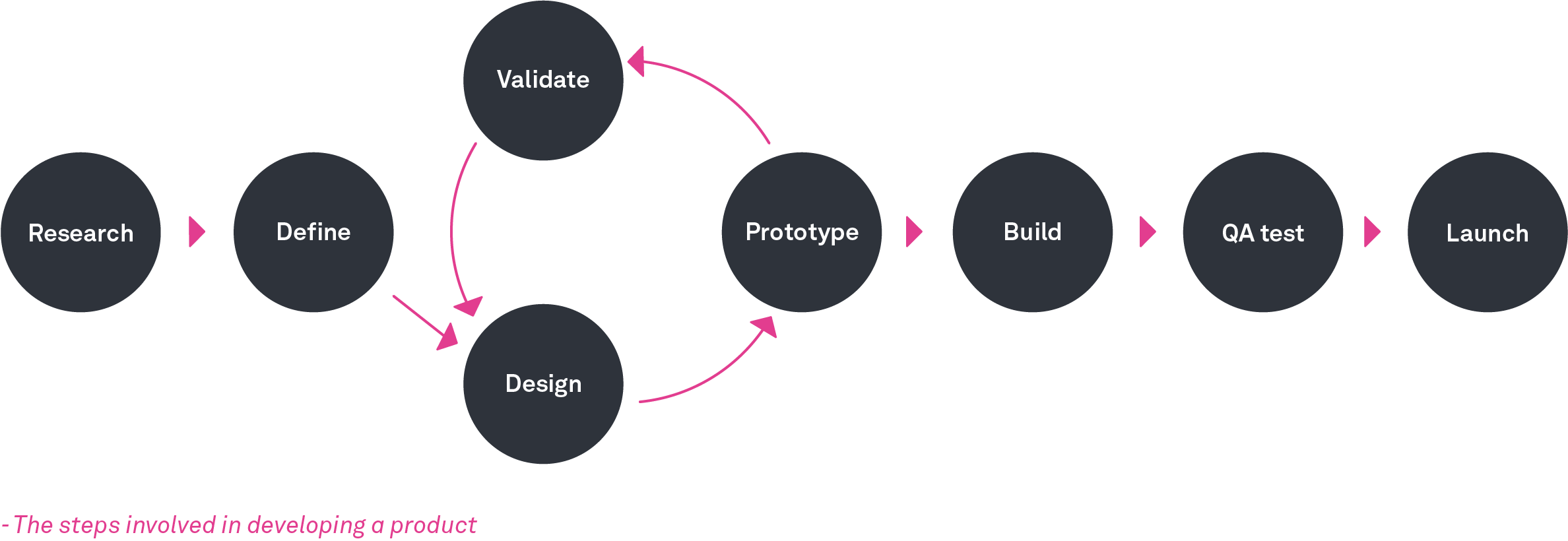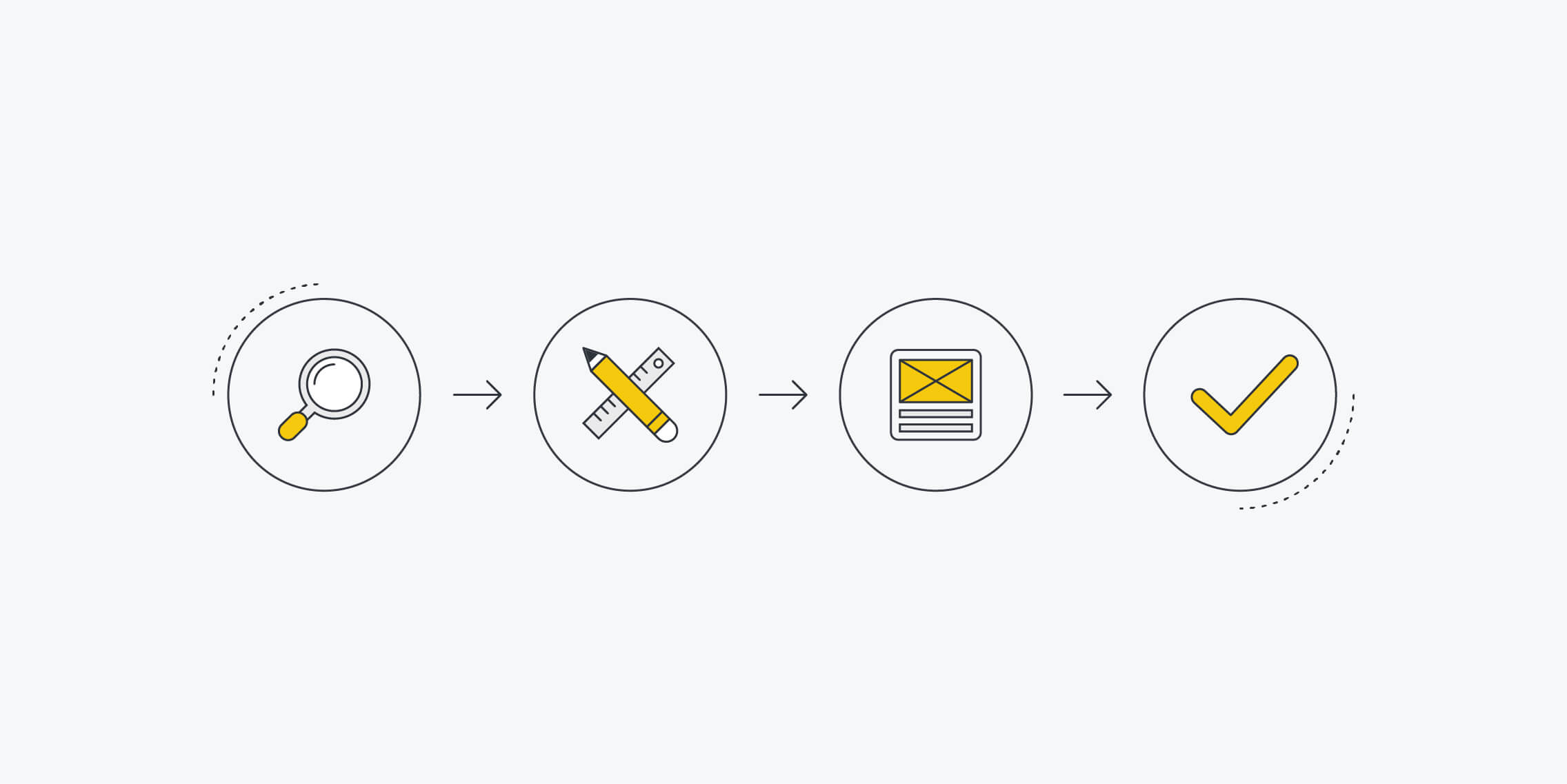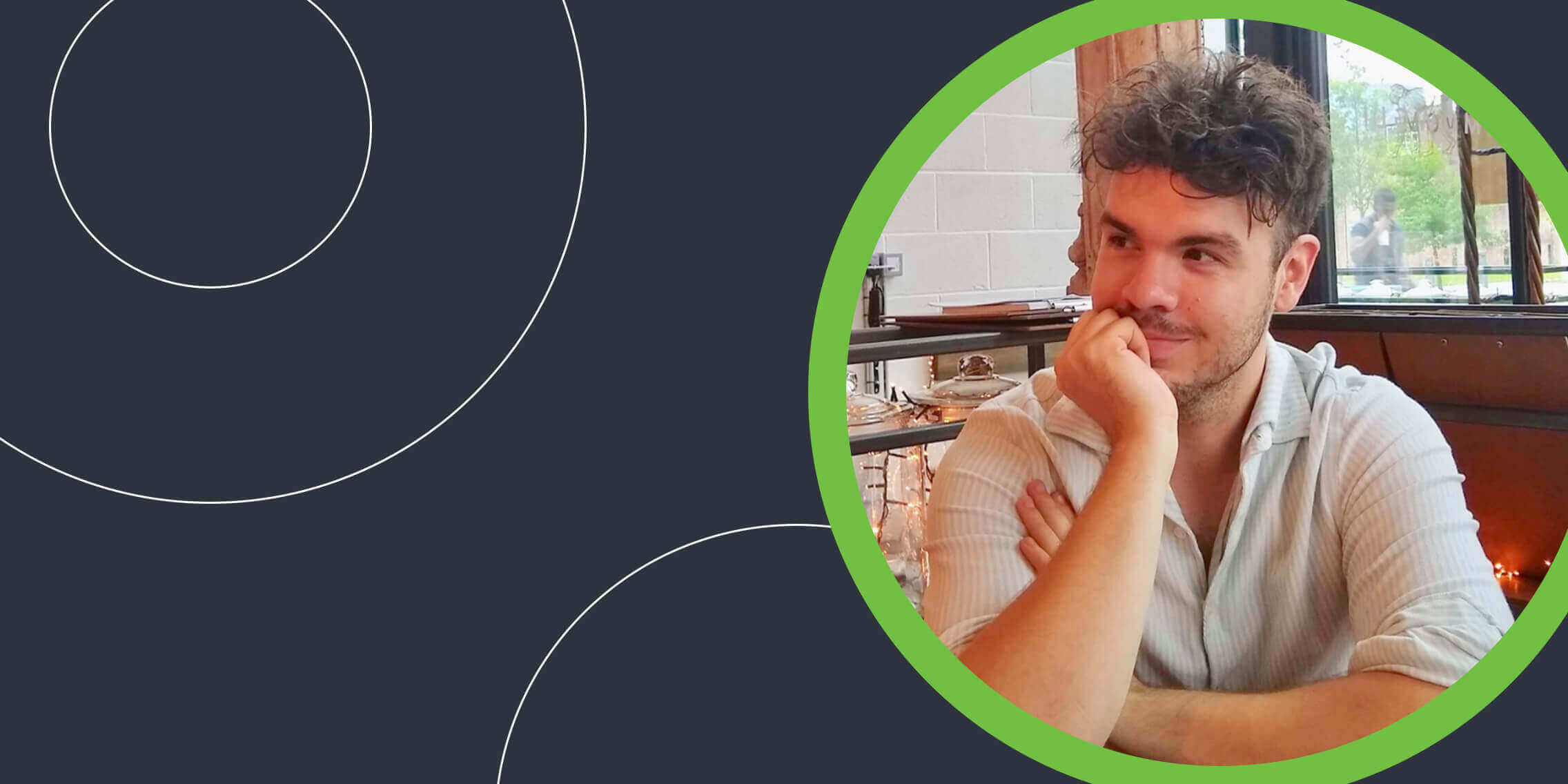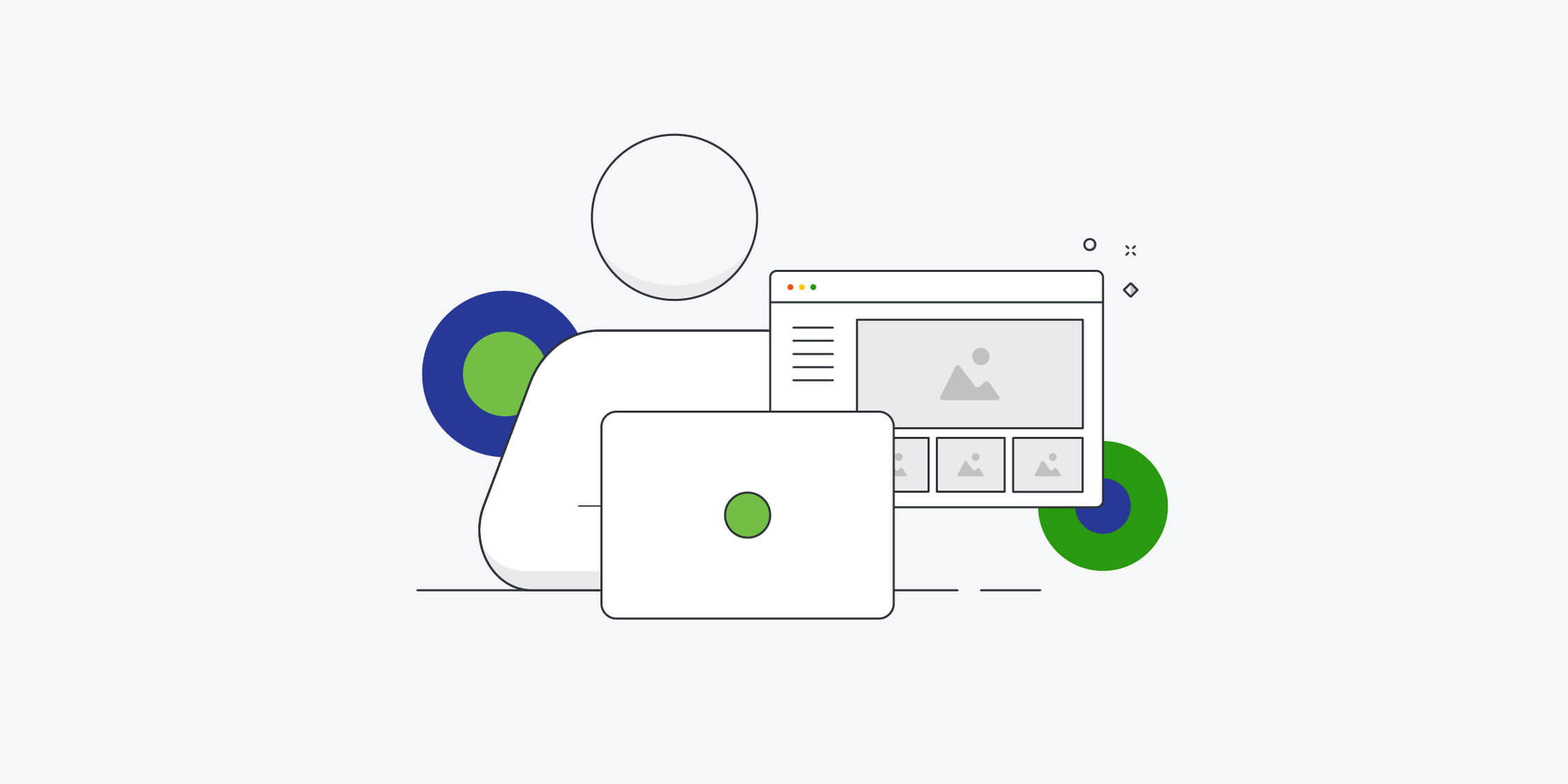Successful products solve genuine problems for users. And UX research identifies the problem that our product or service needs to solve. It’s the first – and arguably most important – step in the UX process.
Because if you’re not doing your research, you’re not doing UX.
In a simplified version of the UX process, UX or user researchers (as they’re also known) lead the research stage. In the below diagram, their input is represented by the green wave. Their main responsibilities lie in the research stage but they play an important role in the later stages too. A successful product requires regular testing to stay viable.
What do UX researchers do?
- Conduct research like interviews, surveys and focus groups.
- Analyse the research data to uncover what the main problems are.
- Define the scope of the problems to make sure the right things are prioritised.
- Present their findings to the wider team.
What soft skills do you need as a UX researcher?
- Empathy: Seeing things from the user’s perspective.
- Collaboration: Working well with different teams and personalities.
- Communication: Clearly explaining issues and making recommendations people understand.
What technical skills do you need as a UX researcher?
UX researchers need to be skilled in both qualitative and quantitative research methods.
Note: Dedicated research teams are a sign of high UX maturity in a company. In very advanced teams, people are focused on a specific area of research like qualitative researchers.
What’s the difference between quantitative and qualitative research?
Quantitative (quant) research focuses on numerical data. It’s often represented in statistics and percentages. It gives us an overview of what is happening without telling us why.
For example, polling before an election will tell us who people are going to vote for, but not necessarily why. Quant research is often represented in percentages and numbers, e.g., 45% of people are going to vote for party A and 55% for party B.
Qualitative (qual) research provides more depth and insight. It involves talking to people, gathering insights, finding problems and fixing them. There’s a lot of interpretation, just like in psychology or sociology. It uses methods like interviews, surveys, focus groups, and usability tests. It will tell us why people are voting for party A or party B.
Together, quant and qual give us a full picture.
How much do UX researchers earn?
In markets where the UX industry is more mature, like the US, UX research roles are more common. And they also have a higher salary.
UX research insights from the experts
We spoke to two research veterans about the reality of working in UX research and how to get into a research-focused role.
Mitchell Wakefield started his career in UX research at IBM Canada in 2013 as a university intern. He worked as a UX research consultant for a number of years before moving into the healthcare space. He’s been with NHS Digital since 2017.
Mitchell Wakefield
“It’s overwhelming for one person to do the job of two or three people, working across design, content, research and project management. It might be appropriate for a small, fast-moving startup but as a firm gets bigger having one person leading across all these areas just isn’t sustainable.
If your team has the budget and maturity level to understand the importance of this, make sure research is visible throughout your team. Really connect with the insights and the user research. That’s key – demonstrating your value.”
Melanie Polkosky has over 20 years experience in UX research and design. A cognitive psychologist (PhD), Melanie has worked as a UX consultant for a number of Fortune 500 companies around the world. In 2015 wrote a book titled, “Uncovering Truffles: The Scarcity and Value of Women in STEM”.
Melanie Polkosky
“Interpersonal skills and emotional intelligence are critical to the role. I see UX people as being the wellspring of emotional intelligence in most organisations. You just see a lot of people that come from a behavioural science or art and design backgrounds. They tend to be much more people-focused than other parts of the organisation.
My advice to those starting out in the field would be to work in a team where you can have mentors. It’s important to be able to learn from the experience of others. The challenge when you’re consulting or working as a freelancer is that you’re the expert. Your clients are looking to you for that kind of answer. If you don’t know it, that’s a really stressful place to be.”







